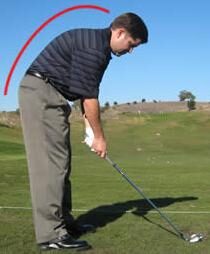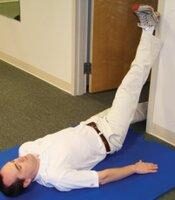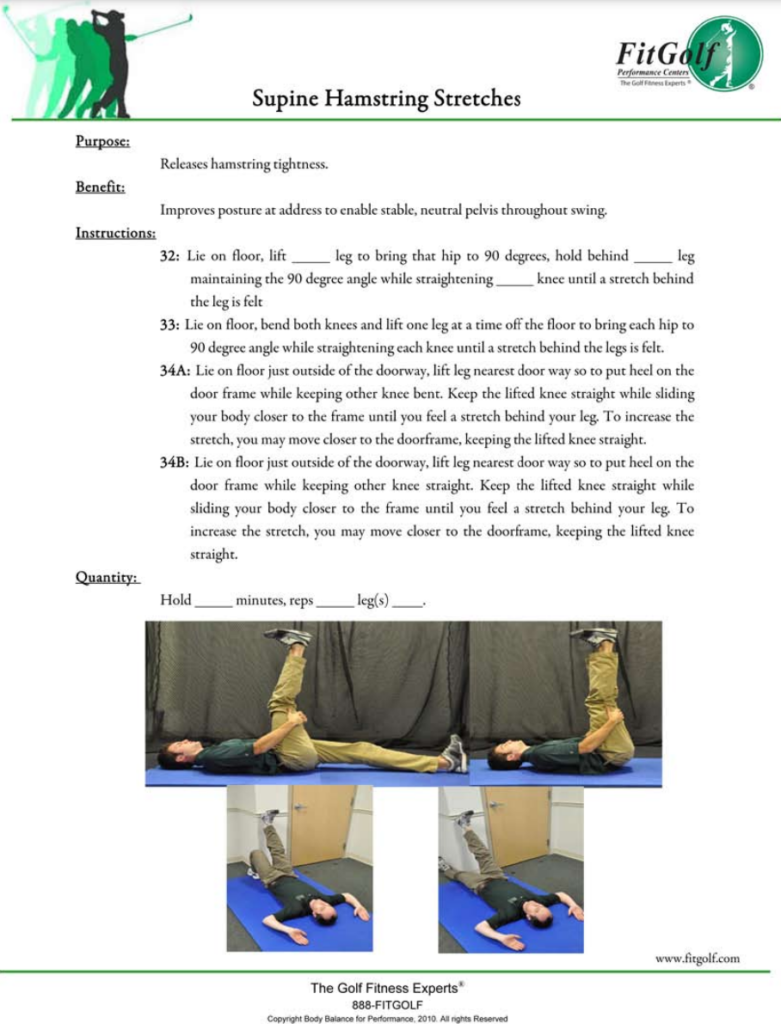
In a previous post “Stand Right So You Don’t Hit It Right” we discussed posture at address and how poor posture will lead to flawed swing movements and potential injury. We also gave you a simple drill to help educate your body to move into an ideal posture position. However, some golfers may find it challenging to get into this position. Asking what is necessary from the body to comfortably set-up into a neutral posture requires adequate flexibility, strength, and motor control. More times than not, amateur golfers’ first issue is flexibility, so today we will discuss a common villain, the hamstrings.
Hamstrings are the muscles behind the thighs which originate from the pelvis and attach below the knee. Their main action is to flex the knee which allows you to bend your knee during walking and running. The hamstrings also control the degree to which your pelvis and spine can bend forward in the address position of your golf swing. If one is not able to touch their toes in the standing position, the chances of that person getting and maintaining the correct forward bend from the pelvis and spine diminish greatly. If the hamstrings are tight, the research proves that you will not be able to bend forward enough from the hips in your address posture position. This leads to a position that is bent too far from the knees, or more commonly, over-rounded in the spine. As mentioned in “Stand Right So You Don’t Hit It Right”, an overly rounded spine will limit your ability to fully rotate throughout the swing and will increase your chance of injury.
If you think tight hamstrings are affecting your posture position at address, try the following hamstring stretch which will allow you to achieve ideal posture at address and minimize swing flaws influenced by your current posture position.

Find a corner of a wall in your home where you can lay down on your back. Place your right foot up against the wall and your left leg flat on the floor. Make sure that your right knee is fully extended or “locked out” by squeezing your right thigh muscle and bend your right ankle down toward you so you feel a gentle stretch in your right calf. Choose a distance from the wall in which the stretch is challenging, yet tolerable. From here, squeeze your abdominals and make sure your low back is pressed against the floor. If you are properly positioned away from the wall, this will create a stretching sensation in the back of your knee, your upper and lower hamstring, and the calf muscles. If the stretch feels intolerable, move farther away from the wall and reposition your leg. When you have found the right distance from the wall, hold the stretch position for 3-5 minutes or until a complete release of the stretch feeling has been accomplished. Switch legs and repeat the stretch.
You can advance the stretch when ready by gradually moving closer to the wall and sliding your leg farther up the wall. Perform this exercise at least 5 days per week. You should begin to notice a big difference in your ability to achieve a correct posture position at address and a more consistent golf swing.

Jason Rivkin, GPS, CGFI-FP1
If you try these exercises and you find them to be too challenging or uncomfortable, do not continue, until you have consulted with your physician. All exercises for golf should be customized to your needs after a proper evaluation.
Come In and See Us
Want to take your golf to the next level? Our FitGolf® Trainers are experts at working one-on-one with you to tailor a training program to meet the specific needs of your body and help you achieve the results you are hoping to see in your golf.
Want More Resources?
Looking for more exercise resources, blog posts or monthly golf-specific exercise content sent straight to your inbox?
